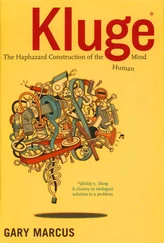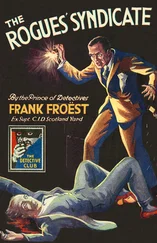Only recently have we come to understand the human genome in sufficient depth and subtlety to be able to put together its marvellous story – to discover, for example, that there is rather more to it than DNA alone. This is the story I shall attempt to convey in this book.
A few years ago I gave a lecture on a related theme at King’s College London. The chairman asked me if I planned to write a book about it. When I said yes, he asked me to please write it in words that a lay reader, like himself, could readily understand.
‘Just how simple do you want me to make it?’
‘I want you to assume that I – your reader – know nothing at all to begin with.’
This, then, I promise to do. There will be no complicated scientific language, no mathematical or chemical formulae or unexplained jargon, and I shall introduce no more than a handful of simple illustrations. Instead I shall begin from first principles and assume that the readers of this book know little about biology or genetics. Even non-biologists might recall the many surprises when the first rough draft of the human genome was announced to the world, in 2001.The discoveries since then have confirmed that a good deal of the human genome – in its evolution, structure and workings – is far from what we had earlier imagined. Those surprises do not diminish the importance of the wealth of knowledge that had gone before, but rather, like all great scientific discoveries, they enhance it. Thanks to this new understanding, humanity has entered what I believe to be a golden age of genetic and genomic enlightenment, which is already being extrapolated to many important fields, from medicine to our human prehistory. I think society at large deserves to understand this and what it promises for the future.
one
Who Could Have Guessed It?
The large and important and very much discussed question is: How can the events in space and time which take place within the spatial boundary of a living organism be accounted for by physics and chemistry?
ERWIN SCHRÖDINGER
In April 1927 a young Frenchman, René Jules Dubos, arrived at the Rockefeller Institute for Medical Research, in New York, on what would appear to have been a hopeless mission. Tall, bespectacled and a recent graduate of Rutgers University, New Jersey, with a PhD in soil microbiology, Dubos had an unusually philosophical attitude to science. He had become convinced, through the work of eminent Russian soil microbiologist Sergei Winogradsky, that it was a waste of time studying bacteria in test tubes and laboratory cultures. Dubos believed that if we really wanted to understand bacteria we should go out and study them where they actually lived and interacted with one another and with life in general, in the fields and the woods – in nature.
On graduation from Rutgers Dubos had found himself unemployed. He had applied to the National Research Council Fellowship for a research grant but had been turned down because he wasn’t American, but somebody had scribbled a handwritten message on the margin of the rejection letter. Dubos would later reflect upon the fact that it was written in a female hand, almost certainly added as a kindly afterthought by the official’s secretary. ‘Why don’t you go and ask advice and help from your famous fellow countryman, Dr Alexis Carrel, at the Rockefeller Institute?’ Dubos duly wrote to Carrel, which brought him, in April 1927, to the building on York Avenue, on the bank of the East River.
Dubos knew nothing about Carrel, or indeed about the Rockefeller Institute for Medical Research, and was surprised on his arrival to discover that Carrel was a vascular surgeon. Dubos had no academic knowledge of medicine and Carrel knew nothing about the microbes that lived in soil. The outcome of their conversation was all too predictable; Carrel was unable to help the youthful microbiologist. Their conversation closed about lunchtime and Carrel did Dubos the courtesy of inviting him to have lunch with him in the Institute’s dining room, which had the attraction for a hungry Frenchman that they served freshly baked bread.
It seemed entirely by accident that Dubos found himself sitting at a table next to a small, slightly built gentleman with a domed bald head who addressed him politely in a Canadian accent. The gentleman’s name was Oswald Theodore Avery. Although Dubos later confessed that he knew as little about Avery as he did of Carrel, Professor Avery (his close associates referred to him as ‘Fess’) was eminent in his field, which was medical microbiology. It would prove to be a meeting of historic importance both to biology and to medicine.
Avery subsequently hired Dubos as a research assistant, in which role Dubos discovered the first soil-derived antibiotics. Meanwhile Avery led his small team – who were working on what he called his ‘little kitchen chemistry’ – on another quite different quest, one that would help unravel the key to heredity. Why then does society know little to nothing about this visionary scientist? To understand how this anomaly came about we need to go back in time to the man himself and the problems he faced three-quarters of a century ago.
*
In 1927, when Dubos first met Avery, the principles of heredity were poorly understood. The term ‘gene’ had been introduced into the nomenclature two decades earlier by a Danish geneticist, Wilhelm Johannsen. Curiously, Johannsen had adopted a vague concept of heredity, known as ‘pangene’, that was first proposed by Charles Darwin himself. Johannsen modified it to take on board the belated discovery of the pioneering work of Gregor Mendel, which dated back to the nineteenth century.
Readers may be familiar with the story of Mendel – the cigar-smoking, Friar-Tuck-like abbot of an Augustinian monastery in Brünn, Moravia (now the Czech Republic) – who undertook some brilliantly original studies of the peas he cross-bred in the monastery vegetable garden. From these studies Mendel discovered the basis of what we now know as the laws of heredity. He found that certain characteristics of the peas were transmitted to the offspring in a predictable manner. These characteristics included tallness or dwarfishness, presence or absence of the colours yellow or green in the blossoms or axils of the leaves, and the wrinkled or smooth skin in the peas. Mendel’s breakthrough was to realise that heredity was stored within the germ cells of plants – and this would subsequently be extrapolated to all living organisms – in the form of discrete packets of information that somehow coded for specific physical characters or ‘traits’. Johannsen coined the term ‘gene’ for Mendel’s packet of hereditary information. At much the same time, a combative British researcher, William Bateson, extrapolated the term ‘gene’ to the discipline he now called ‘genetics’ to cover the study of the nature and workings of heredity.
Today, if we visit the free dictionary online, we get the following definition of a gene: ‘The basic physical unit of heredity; a linear sequence of nucleotides along a segment of DNA that provides the coded instructions for the synthesis of RNA, which, when translated into protein, leads to the expression of hereditary character.’ But Mendel had no notion of genes as such, and he certainly knew nothing about DNA. His discoveries languished in some little-read papers for forty years before they were rediscovered and their importance was more fully understood. But in time his idea about the discrete packets of heredity we now call genes helped to answer a very important medical mystery: how certain diseases come about through an aberration of heredity.
We now know that genes are the basic building blocks of heredity in much the same way that atoms are the physical units that make up the physical world. But during the early decades of the twentieth century, nobody had any real notion of what genes were made from, or how they worked. But here and there, people began to study genes in more depth by examining their physical expression during the formation of embryos or in the causation of hereditary diseases. Fruit flies became the experimental model for pioneering research in the laboratory of Chicago-based geneticist Thomas Hunt Morgan, where researchers located genes, one by one, onto structures called chromosomes, which were themselves located within the nuclei of the insect’s germ cells. The botanical geneticist Barbara McClintock confirmed that this was also the case for plants. McClintock developed techniques that allowed biologists to visualise the actual chromosomes in maize, leading to the groundbreaking discovery that, during the formation of the male and female germ cells, the matching, or ‘homologous’, chromosomes from the two parents lined up opposite each other and then the chromosomes swapped similar bits so that the offspring inherited a jumbled-up mixture of the inheritance from the two parents. This curious genetic behaviour (which is known as ‘homologous sexual recombination’) is the explanation of why siblings are different from one another.
Читать дальше












